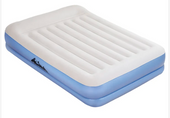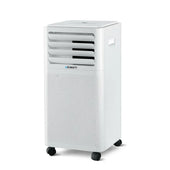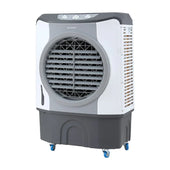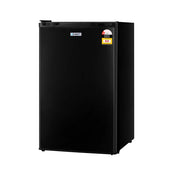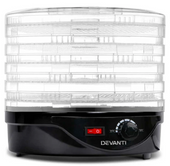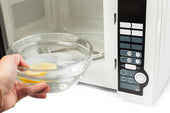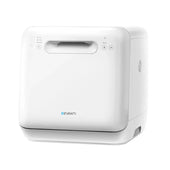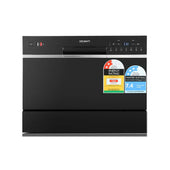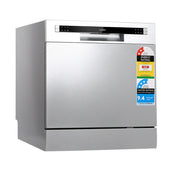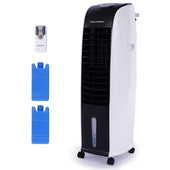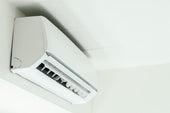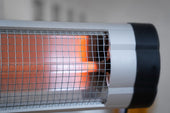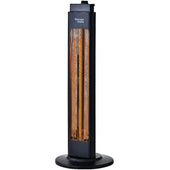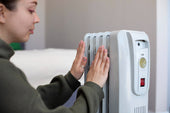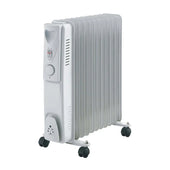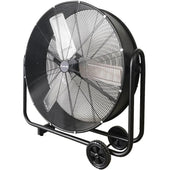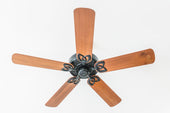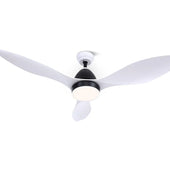Understanding Your Fabric Sofa: Types and Care Labels
Fabric sofas come in various materials, each requiring specific care methods. Common types include cotton, linen, polyester, velvet, and blends. Cotton and linen are breathable but prone to stains, while polyester is durable and stain-resistant. Velvet sofas are luxurious but need extra attention to maintain their texture.
Care labels on sofas provide vital cleaning instructions. Found beneath cushions or on tags, these codes indicate whether the sofa can be cleaned with water (W), solvent (S), both (WS), or requires dry cleaning only (X). During Days recommends always referring to care labels before cleaning to avoid damaging the material. Proper understanding prevents deterioration and ensures longevity.
Essential Cleaning Supplies You'll Need
To clean a fabric sofa effectively, having the right supplies is crucial. These items ensure thorough cleaning without damaging the fabric.
Key supplies to gather include:
- Vacuum cleaner: A vacuum with an upholstery attachment removes dirt, dust, and crumbs embedded in the fabric.
- Microfibre cloths: These are gentle yet effective for wiping and scrubbing without risk of scratches.
- Soft-bristled brush: Handy for loosening dirt and brushing off debris from sleeves, arms, or cushions.
- Mild liquid soap or detergent: Opt for a soap specifically formulated for delicate fabrics.
- Distilled white vinegar: An excellent stain remover and odour neutraliser for stubborn spots.
- Spray bottle: Useful for evenly distributing solutions across large areas.
- Baking soda: Great for deodorising and tackling grease-based stains.
- Warm water: Essential for mixing cleaning solutions.
Being prepared with these supplies boosts cleaning efficiency while preserving your fabric sofa's pristine condition.
Preparing Your Sofa for Cleaning: Dusting and Vacuuming
To begin fabric sofa cleaning, it is crucial to remove any surface debris. This helps prevent dirt from sinking deeper into the fabric during cleaning. Use a feather duster or a soft cloth to eliminate loose dust. Focus on commonly overlooked areas like crevices, folds, and along the edges.
Next, vacuum the sofa thoroughly. Attach the upholstery nozzle to the vacuum cleaner for optimal results.
- Start with cushions: Remove them if possible, and clean both sides.
- Address seams and corners: Use the crevice tool for hard-to-reach spots.
- Cover the entire surface: Ensure no areas are skipped.
This step ensures a clean foundation for further cleaning.
Spot Testing: Why It's Crucial
Spot testing plays a vital role in ensuring a fabric sofa is cleaned safely without risking damage. Cleaning solutions and methods may react differently with various fabric types, potentially leading to discolouration, shrinking, or texture changes. A small, inconspicuous area of the sofa, such as under a cushion or a corner on the back, should be used for testing. By applying the cleaning solution and observing its effects over 24 hours, individuals can confirm the suitability of the method. This precaution safeguards the fabric’s appearance and durability, reducing costly mishaps often caused by improper cleaning techniques or chemicals.
General Maintenance: Weekly Cleaning Tips
Regular upkeep prevents dirt build-up and keeps a fabric sofa looking fresh. A weekly cleaning routine can maintain its appearance and longevity.
- Vacuum the sofa using an upholstery attachment, ensuring crumbs and dust are removed from crevices and cushions.
- Inspect for stains or spots. Address stains immediately with a mild fabric cleaner designed for sofas.
- Fluff cushions to retain their shape and redistribute stuffing evenly.
- Rotate the cushions if they are reversible to prevent uneven wear.
- Wipe down non-fabric areas like wooden or metal parts, ensuring no dirt accumulates.
Adhering to these steps maintains cleanliness and prevents extensive cleaning tasks later.
How to Deal with Everyday Stains
To tackle everyday stains on a fabric sofa, act swiftly to minimise lasting damage. Always blot spills with a clean, absorbent cloth, avoiding rubbing, which can spread the stain or damage fibres.
For stains like coffee, tea, or food, mix mild liquid detergent with warm water, creating a soapy solution. Apply it gently using a sponge, working from the outside towards the centre to prevent spreading.
Oily stains can be lifted using baking soda or cornstarch; sprinkle it over the spot, let it sit for 20 minutes, then vacuum thoroughly. Always test cleaning methods in an inconspicuous area before full application.
Deep Cleaning Your Fabric Sofa: Step-by-Step Process
- Vacuum Thoroughly Begin by vacuuming the entire sofa to remove loose dirt, dust, and debris. Use a brush attachment to target hidden crevices and corners.
- Check Fabric Care Label Locate and check the care label on the sofa for cleaning instructions or warnings. This ensures you use appropriate cleaning methods.
- Spot-Test Cleaning Solution Make a diluted cleaning solution using warm water and mild detergent. Test this on an inconspicuous area to confirm it doesn’t damage or discolour the fabric.
- Clean Stains Dip a clean cloth into the solution and gently dab stains. Avoid scrubbing as it may damage the upholstery or spread the stain further.
- Wipe Down the Sofa Use a microfibre cloth dampened with the solution to wipe the entire sofa evenly, removing residue and lingering dirt.
- Rinse and Dry After cleaning, rinse the fabric by wiping with a damp cloth soaked in clean water. Allow the sofa to air-dry completely before use.
Removing Odours and Refreshing Your Sofa
To eliminate odours from a fabric sofa, start by generously sprinkling baking soda over the surface. Let it sit for up to 24 hours to neutralise unpleasant smells. Vacuum the sofa thoroughly, using an upholstery attachment for effective removal of the baking soda and trapped particles. For stubborn odours, a fabric-safe upholstery spray or a mixture of water and white vinegar can be lightly misted onto the surface. Ensure proper ventilation while drying to prevent dampness. When refreshing, adding a few drops of essential oil to the baking soda can leave a pleasant aroma. Test all solutions on an inconspicuous spot first.
Homemade Cleaning Solutions: Tried and Tested Recipes
Homemade cleaning solutions offer a natural, budget-friendly way to clean fabric sofas safely. Here are some effective recipes:
- Vinegar and Baking Soda Solution: Mix 1 cup of white vinegar, 1 teaspoon of baking soda, and 2 cups of warm water. Apply gently with a soft cloth for stains.
- Dish Soap Mixture: Combine 2 cups of warm water with 1 teaspoon of mild dish soap. Dab onto stains and blot with a clean towel.
- Rubbing Alcohol Spray: Use rubbing alcohol in a spray bottle for tough stains. Spray lightly and blot with a dry, soft cloth.
- Lemon Juice and Baking Soda Paste: Add baking soda to lemon juice until paste forms. Apply to stained areas for odour and stain removal.
When to Call the Professionals: Signs to Watch For
- Deep, persistent stains: If stains have penetrated deep into the fabric and remain despite repeated cleaning efforts, professional help may be necessary.
- Foul odours: Persistent smells that linger after DIY treatments could indicate trapped moisture or bacteria requiring expert attention.
- Colour fading or damage: When cleaning methods cause visible discolouration or wear to the sofa's fabric, reaching out to professionals prevents further harm.
- Mould or mildew: Spotting mould or mildew growth demands urgent intervention from professionals to tackle associated health risks.
- Sensitive fabric materials: Delicate upholstery, such as silk or velvet, benefits from specialised care to preserve its integrity and appearance.
Protecting Your Sofa: Tips to Keep it Looking New
- Place a sofa cover or throw over the fabric surface to guard against spills, dirt, and pet fur.
- Implement a no-eating rule in rooms with fabric sofas to reduce the risk of stains.
- Rotate cushions regularly to prevent uneven wear and maintain their shape.
- Use fabric protectors or stain-repellent sprays to create a barrier against dirt and liquids.
- Avoid exposing the sofa to direct sunlight, which can cause fabric to fade over time.
- Clean up spills immediately using a white cloth to avoid permanent staining.
- Vacuum frequently with a soft brush attachment to eliminate dust and debris.
- Train pets to stay off the furniture or use pet-friendly covers if needed.
Caring for Different Types of Fabric Upholstery
Different upholstery fabrics require distinct cleaning techniques to preserve their texture and durability:
- Cotton or Linen Fabrics: Spot-clean stains using a small amount of mild detergent mixed with lukewarm water. Test the solution on an inconspicuous area first to avoid discolouration.
- Microfibre: Use a dry brush to loosen debris, followed by a solvent-based cleaner suitable for microfibre. Use circular motions for better results.
- Velvet: Blot gently with a damp cloth and avoid excessive water to prevent matting. Use a specialised velvet upholstery brush to restore its smoothness.
- Synthetic Fabrics: These often permit steam cleaning. Always check the care label to confirm compatibility with heat-based methods.
Maintaining specific cleaning routines helps extend the fabric's lifespan.
How Often Should You Clean a Fabric Sofa?
Regular cleaning of a fabric sofa is essential for maintaining its appearance and longevity. Vacuuming should be done at least once a week to remove dust, crumbs, and debris that accumulate on the surface and in crevices. For deeper cleaning, spot-treat spills and stains immediately to prevent them from setting into the fibres.
It is recommended to perform a comprehensive cleaning every 6-12 months, depending on usage and environmental factors such as exposure to pets, children, or smoke. Sofas in high-traffic areas may require more frequent care to ensure hygiene. Always follow the manufacturer's instructions for the best results.
Eco-Friendly Cleaning Options for Your Sofa at Home
Eco-friendly sofa cleaning involves using natural and non-toxic materials that minimise harm to the environment while maintaining effective results. By choosing the right cleaning solutions, one can reduce chemical exposure and promote sustainability.
- Baking Soda: Effective for odour removal and mild stain lifting; sprinkle it over the surface, let it sit for 15 minutes, and vacuum it away.
- White Vinegar Solution: A mix of equal parts water and white vinegar targets tough stains; apply with a spray bottle and blot gently with a cloth.
- Steam Cleaning: Utilising steam cleans deeply without detergents, reducing the need for harsh chemicals.
- Castile Soap: A plant-based soap diluted in warm water cleans gently yet thoroughly.
These eco-safe methods also help protect fabric fibres and prolong the sofa’s life span.
Mistakes to Avoid When Cleaning Your Fabric Sofa
- Skipping the manufacturer's label instructions: Always read and follow the cleaning tag on the sofa to avoid using incompatible products or methods.
- Using excessive water: Over-saturating the fabric can lead to water stains, damage the padding, or encourage mould growth.
- Neglecting to test cleaning solutions: Skipping a patch test might result in discolouration or fabric damage from harsh chemicals.
- Scrubbing too harshly: Vigorous scrubbing can wear down fibres, causing permanent damage to the fabric’s texture and appearance.
- Ignoring immediate stains: Delayed cleaning allows stains to set, making them harder to remove later.
- Assuming all fabrics are the same: Different types of upholstery require specific cleaning approaches for optimal results.










